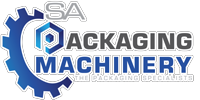In the world of packaging, businesses must decide between manual packaging and automated packaging machines. While manual processes may seem cost-effective at first, investing in machinery offers significant advantages in terms of efficiency, consistency, and long-term savings.
1. Speed and Efficiency
Manual packaging requires considerable time and labour, limiting output and making it difficult to scale production. In contrast, automated packaging machines can handle large volumes quickly, ensuring faster processing and greater productivity.
Example:
A single employee may take minutes to package one product, while a machine can package hundreds or thousands per hour, significantly boosting efficiency.
2. Accuracy and Consistency
Human error in manual packaging can lead to uneven fills, improper sealing, and packaging defects. Machines provide precision and uniformity, ensuring that every package is consistent in weight, size, and seal quality.
Example:
An auger screw VFFS machine ensures precise measurements for powders, reducing material waste and improving product quality.
3. Cost-Effectiveness
While manual packaging seems cheaper upfront, labour costs, material waste, and inefficiencies can add up over time. Packaging machines reduce the need for excess labour, minimize material wastage, and enhance productivity, leading to substantial cost savings.
Example:
A Vertical Form Fill Seal (VFFS) machine can package products at a fraction of the cost per unit compared to manual labour.
4. Hygiene and Compliance
For industries like food, pharmaceuticals, and cosmetics, maintaining strict hygiene standards is essential. Manual handling increases the risk of contamination and inconsistencies, while machines operate in a controlled, sanitary environment that meets regulatory standards.
Example:
A cup filling and sealing machine for raw foods ensures airtight seals, preventing contamination and extending shelf life.
5. Scalability for Business Growth
As demand increases, businesses using manual packaging may struggle to keep up. Automated machines enable companies to scale production seamlessly, meeting market demand without compromising on quality or delivery timelines.
Example:
A bottle labelling machine allows manufacturers to label thousands of bottles per hour, making it easy to meet growing customer needs.
Conclusion
Switching from manual to automated packaging machines is a strategic investment that enhances efficiency, accuracy, cost savings, and hygiene compliance. Whether packaging food, pharmaceuticals, powders, or liquids, automation ensures high-quality results and a competitive edge in the market.
Looking for the right packaging machine for your business? Contact us today!
